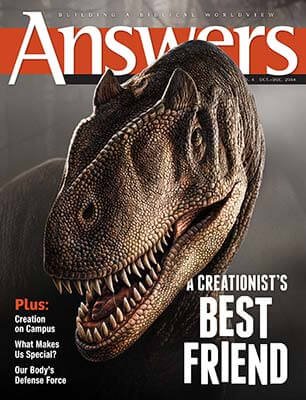
In Case of Fire, Follow the Ants
Design in Nature
Solomon advises us, “Go to the ant, you sluggard! Consider her ways and be wise.” It turns out that architects would be wise to seek her advice, too.
During emergencies, lives are saved by the orderly, rapid evacuation of buildings. Efficient escape routes are important when architects plan the location of hallways and exits. Time is precious during actual emergencies, and nobody pays attention to the details. Fire drills can prove useful in improving evacuation times, but such tests are rather artificial.
It would help architects if they could test how people would react in various layouts during a real panic, but it isn’t ethical to fake such an event.
Ants may provide a way.
Civil engineers at Monash University in Australia set up a table-top building model with moveable walls and exits. They then populated the miniature structure with ants. After the ants had settled into their new habitat for a few days, the experiment began. Pellets of citronella ant repellant were inserted at various locations, and the resulting ant behavior was observed.
As the ants sought escape routes, observers noticed that the ants escaped twice as fast through openings in corners as through similar openings located midway along walls.1 Middle-of-the-wall exits tended to cause confusion and crowding of the ants. The ants escaped more efficiently through corner routes.
The corner route worked well even if the opening was partially blocked by a vertical column. A smooth flow of ants filed rapidly around the obstruction. A similar column placed near middle-of-the-wall exits caused major confusion and slowed ant movement. Why is that?
Engineers take seriously the lessons from ants because they are social insects. The Monash University engineers suggest that, in limited but useful ways, ants mimic the behavior of people. Based on the lessons they learned, corner exits may provide the most efficient escape routes—where feasible—for office buildings, sports arenas, and public transit facilities.
The ant behavior and related computer simulations of crowd behavior show that evacuation time might be cut nearly in half when mid-wall exits are moved to corners.2 The corner walls appear to serve as a “funnel” to direct traffic, but mid-wall exits don’t funnel anyone. Some fleeing ants moved directly past the mid-wall openings, while others collided with ants moving in the opposite direction.
We have much to learn from the tiniest details of God’s creation. Job 12:8 challenges us to “speak to the earth, and it will teach you.” Proverbs 6:6–8 further states that there is profit in observing the ambitious ants.
Ant behavior may help us save lives. Creation is overflowing with such practical ideas and possible solutions to our most vexing problems.
Answers Magazine
October – December 2014
This issue explores the marvelous human immune system. Plus take a look at the Creation Museum's new Allosaurus.
Browse Issue SubscribeFootnotes
- “Panicky Ants Help Design Safest Exit Strategy,” New Scientist 218 (2919):16. For a video of ant behavior, see http://www.newscientist.com/article/dn23613-panicky-ants-help-design-safest-exit-strategy.html.
- Nirajan Shiwakoti and Majid Sarvi, “Enhancing the Panic Escape of Crowd through Architectural Design,” Transportation Research Part C: Emerging Technologies 37 (2013): 260–267.
Recommended Resources

Answers in Genesis is an apologetics ministry, dedicated to helping Christians defend their faith and proclaim the good news of Jesus Christ.
- Customer Service 800.778.3390
- © 2024 Answers in Genesis





